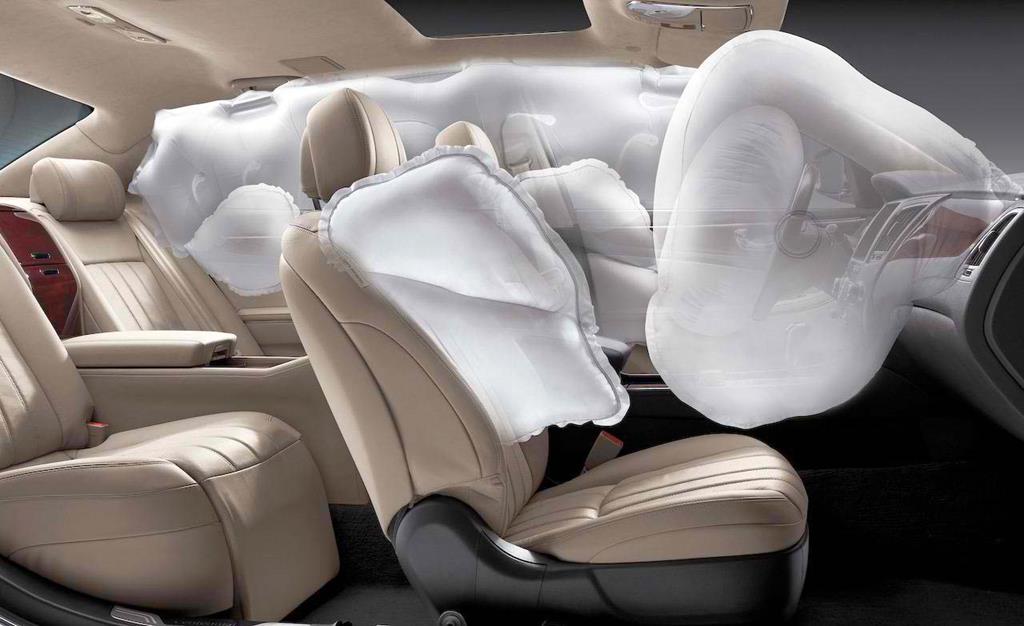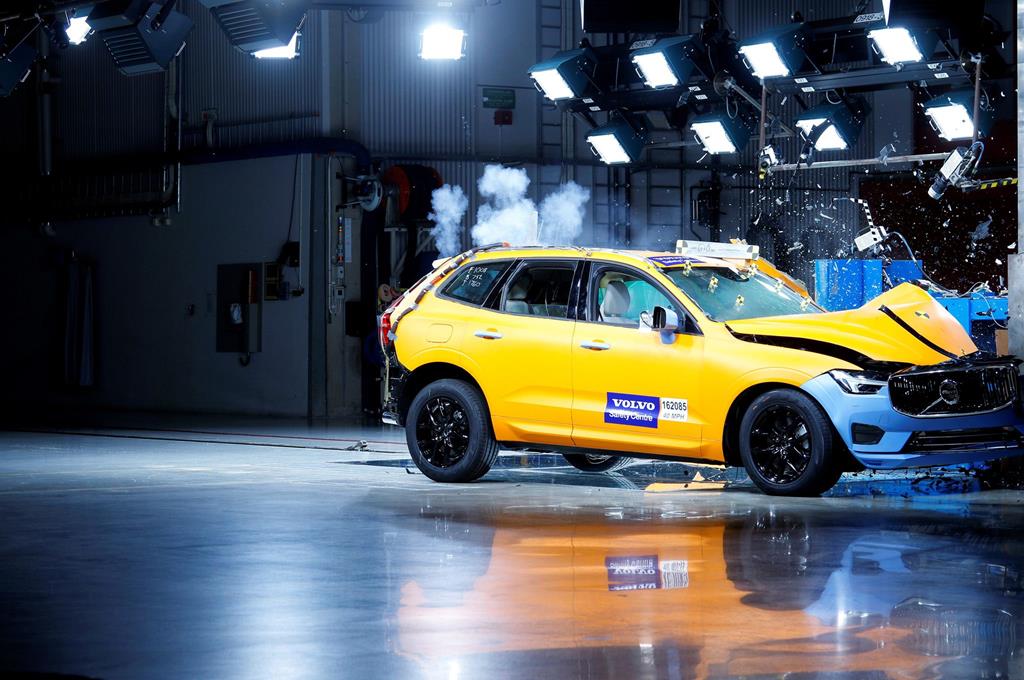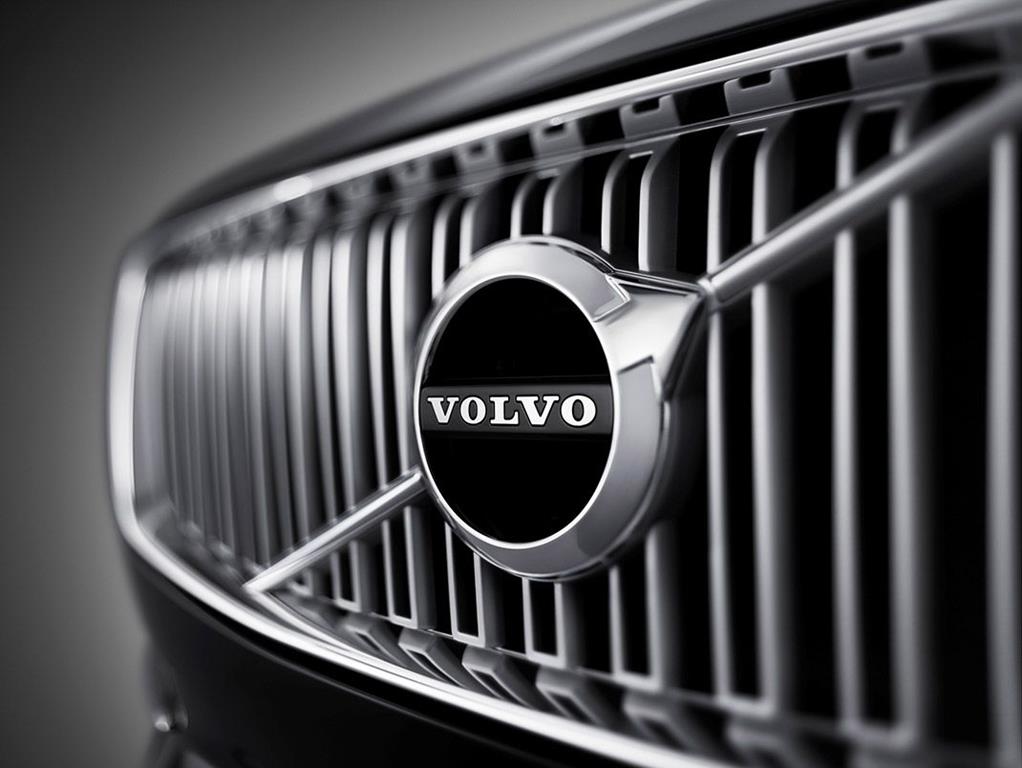The car, which is, according to statistics, the least likely to get into an accident and makes it possible to survive if the crash happened, is exactly this, the legendary Swedish car (Volvo is still based in Sweden, but now belongs to Chinese Geely). Volvo means “I roll” in Latin. The car begins its history from 1927, and all this time quality (and therefore safety) were the dominant factor in this brand car production, although, reliable engines for vessels and boats are also produced under the Volvo brand. Let’s try to figure out whether Volvo is so safe on the roads of the world or this is an artificially created opinion.
Deaths in road accidents
Do people die in Volvo? Alas, it happens. But this is due not to the car, but to violations of its operating rules and traffic regulations. For example, there was a case of Volvo driver’s death in a head-on collision with another car, and the man was not fastened with a seatbelt. However, for many years of Volvo operation, for example, in Great Britain, there was not a single death of a person in an accident with this car. There are isolated examples in Russia, Ukraine and other countries (again, not fastened seat belt, etc.).
In 2018, in Nizhny Novgorod, Volvo driver died in a crash with BMW drove into the oncoming lane, exceeding the speed limit. But the Volvo XC60 was rammed forehead at a speed of 150 km/h. Safety systems were powerless in this case.
Also in the spring of 2018, in Leningrad region, there was a death of a young Volvo driver, who didn’t give way to KAMAZ with a semitrailer. But Volvo driver was not fastened with seatbelts.
In the summer of 2017, near Ulyanovsk, the Volvo-XC90 passenger car was caught between two trucks (one of which went to the oncoming lane, losing control). As a result of the accident, Volvo driver died at the scene.
There was a case on the Tyumen Route when the driver of the Volvo XC90 SUV rammed the Daewoo Nexia (all died in it). The driver himself survived, but didn’t remember anything, since he fell asleep before the crash.
Thus, most of the deaths in Volvo are still exceptional in comparison with the statistics of other car brands’ fatal crashes.
Volvo V40 airbags
Safety of adult passengers and driver is provided, first of all, by a special sequence of airbags inflation. First, an airbag, placed in front of a windscreen, inflates, as fragments can injure a person. Thanks to this, an airbag won’t hurt a passenger, even if he doesn’t sit in a standard pose.
Front belts are equipped with a system of the shoulder height self-regulation, as well as the additional tension option. The advanced system WHIPS protects passenger from side impacts and whiplashes.
In addition to side airbags, the car is also equipped with inflatable “curtains”, and as standard.
The Volvo V40 front airbags are also interesting: depending on the impact force, they can inflate by 70%, or completely.
The safety of child passengers in the Volvo V40 is at the average level. The standard ISOFIX retention system of child restraint allowed to get only 75% in the corresponding category. However, the car has an advantage here again: the Volvo V40 is the world’s first manufacturer, in which the ISOFIX child seat can be rearward-facing.

The main trump card of the Volvo V40, thanks to which it got the title of the safest, is the pedestrian protection system. If the car “detects” pedestrians or an obstacle at a speed of less than 50 km/h, the system stops the vehicle.
Moreover, there are blind spots monitoring, a system of lane loss, automatic parking, emergency braking assistant, dynamic control and traction stabilization, etc.
The Volvo V40 is the world’s first car with airbags for pedestrians. If the sensors located in the front of the car came in contact with human legs, the control unit unlocks the hood, it raises by 10 cm, and the rigid elements are covered with the airbag.
The Volvo concern’s strategy for the creation of safety systems
By 2020, Volvo engineers are planning to produce such a car, which will completely prevent the death of a person (if he is not a suicide maniac). The highest level of safety will be provided by the car autonomy – that is, the driver will continue to drive it, but all safety systems will function in the background, ready to instantly ensure that the likelihood of an accident is excluded. Within the next five years the specialists want fundamentally improve the safety of cars, achieving a level of driver’s and passenger’s protection, which should reduce the number of fatalities in accidents to almost zero.
Safety is a whole religion for Volvo cars. The safety system can be passive, active and autonomous. By the way, it was Volvo engineers who invented a seatbelt. They also proposed a revolutionary adaptive safety technology. Let us characterize the latter in more detail.

What is a revolutionary adaptive safety technology?
Most Volvo models pass crash tests a lot easier than other auto brands do. If the test results are unsatisfactory, this is an incentive for the specialists of the car concern to develop new and new ways to achieve a high safety level. So, aluminum parts in Volvo are excluded, and steel ultra-strong ones are used instead. Ultra-strong steel is five times stronger than traditional one, but at the same time it is thinner and much lighter. Consequently, the vertical force in accidents sharply decreases.
Also, Volvo has tightened crash tests, and they have far surpassed the stringency of Euro NCAP and IIHS requirements, and those crash tests, that these organizations have recently introduced for all cars, have been used in Volvo for the past twenty years.
The Insurance Institute for Highway Safety (IIHS) awarded the Volvo S60, XC60, XC90 and S80 with the “Top Safety Pick +” rating.
A new crossover with active seat belts of two rows of seats and with active head restraints is much better than its competitors in the car market, thanks to the innovative development of Volvo engineers.
When a new Volvo model is being developed, the specialists of the concern break one hundred of its prototypes, watching how the car behaves in various accidents, what’s left of each car. Careful analysis of defects allows them to identify weak points and moments, and then improve them in such a way that in the future the strength of specific parts and the safety of the entire car as a whole would be increased.
Also, with the help of 3D-animation, about 30 000 simulations of various situations, that investigate the impact of an accident on driver and passengers, are performed.
For example, one of the important crash tests is the falling of the car into the ditch (including a rollover). In each crash test, expensive equipment is used to assess the degree of damage to the body and dummies. There are all sorts of sensors everywhere that allow you to get many parameters. If dummies are not damaged, then the car is safe for driver and passengers. All crash tests are conducted with both fastened and unfastened seat belts.

The Volvo car factory in Gothenburg has a special room for acceleration of the car to 120 km per hour, so that it then hits the wall (fence). In addition, so-called “elk test” is performed (simulates the hit of an animal weighing 500 kg under the car wheels). Thus they check the strength of the car pillars. But these are all examples of passive safety, which has its limit. Therefore, the specialists of the Swedish automaker relied on active and autonomous (human factor-excluding) safety systems.
Electronics will help to take into account the factors that the driver may not notice because of fatigue, darkness, adverse weather conditions and usual inattention.
Active safety systems help not only to warn the driver of the danger, but also to automatically prevent a crash. To test these systems, Volvo uses its own crash tests.
At the moment, some Volvo safety systems are able to automatically level the cars in case of lane loss. Also in some models of cars, a perfect automatic braking system is used, it prevents crash with another vehicle.
Even if the crash can’t be avoided, the automatic system allows to reduce the consequence of the accident, being able to reduce the speed in time. This ensures that the driver and the passenger will survive even in serious accidents.
Individual Volvo autoconcern systems have the ability to automatically detect various objects on the road. Including difficult to identify objects, for example, animals or people in carnival costumes. For example, recently in the United States, there were tests of Volvo cars, which were equipped with an automatic braking system. During the tests, people dressed up in different suits, trying to confuse the autonomous system. But, despite the difficulties, electronics determined in time that the obstacle was a person and automatically slowed down the car.
The next step in the development will be a system that is able to read traffic signs in order to automatically switch on the engine regimes and car’s suspension mounts. For example, it is assumed that the system will be able to identify the sign “dirt road”, after which the car will turn to the required mode to control not on the asphalt surface and automatically reduce the speed.
There is also a system for detecting signs of drowsiness, and if the Volvo driver falls asleep at the wheel, such a system will immediately wake him up.

It is worth noting that this is not all. Many active safety developments are currently kept in secret by Volvo specialists.
It is impossible to characterize and even simply list all aspects that ensure the safety of Volvo in this article. But we still tried to do something. However, no matter what car you own, completely safe driving is possible only when you have a driving license. Ideally, if it is an international one. And to process it is quite easy – right on our website.

Published September 28, 2018 • 9m to read






